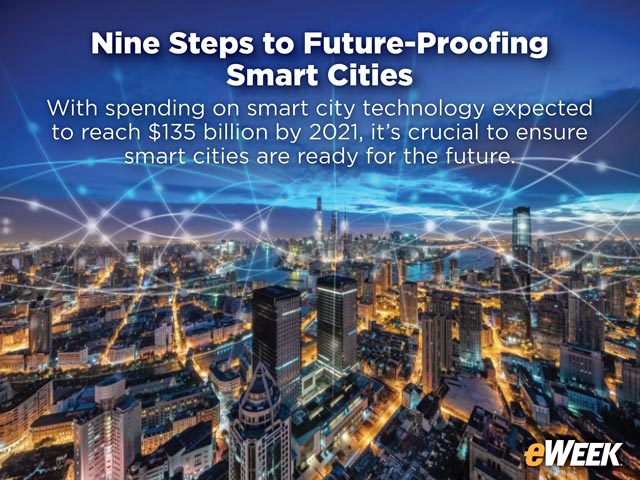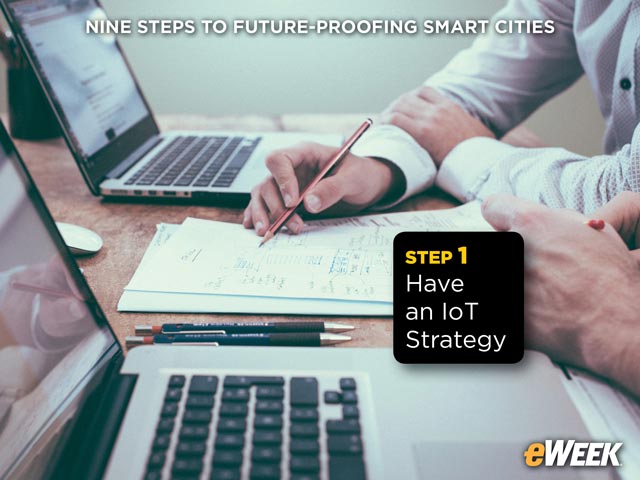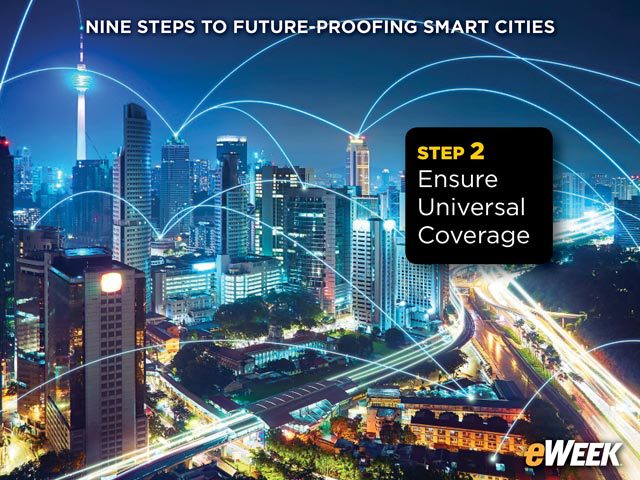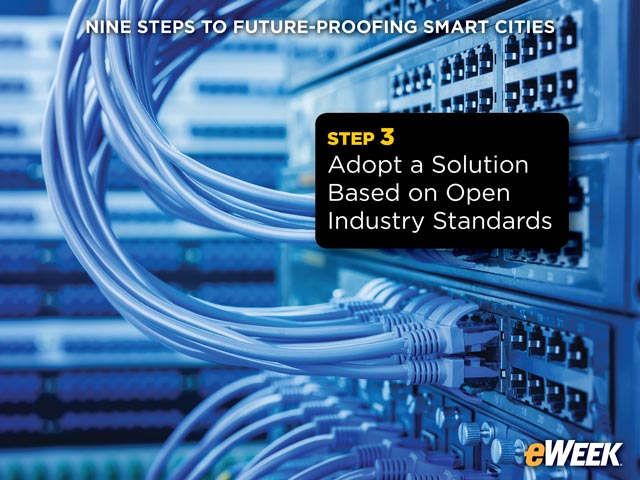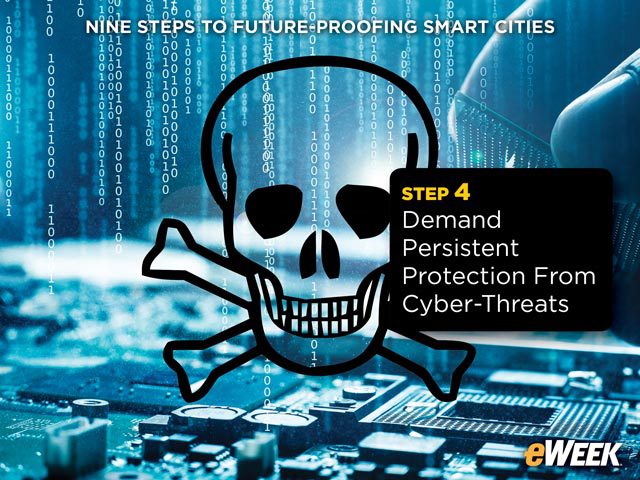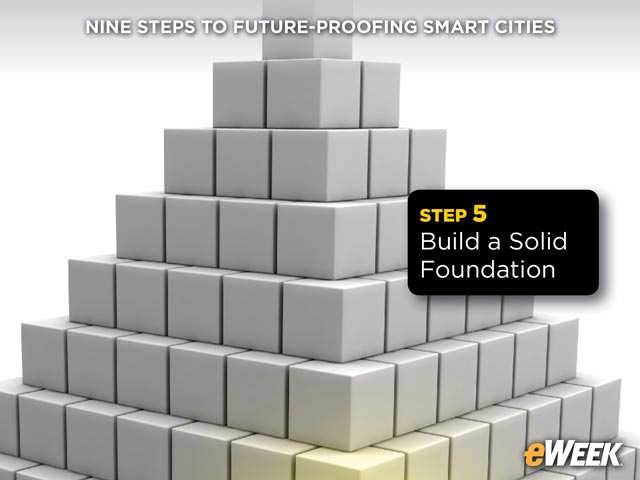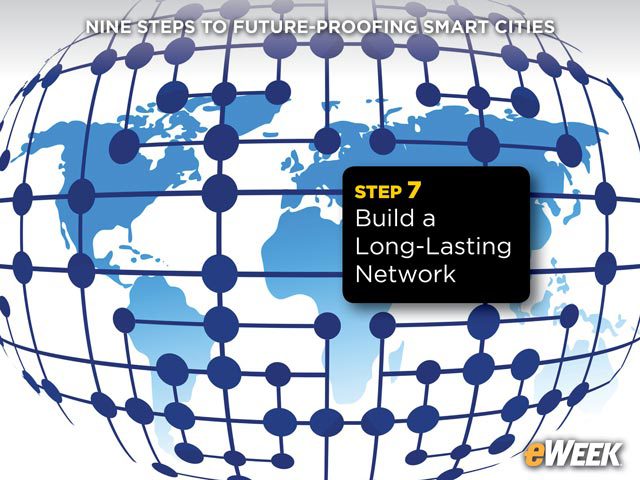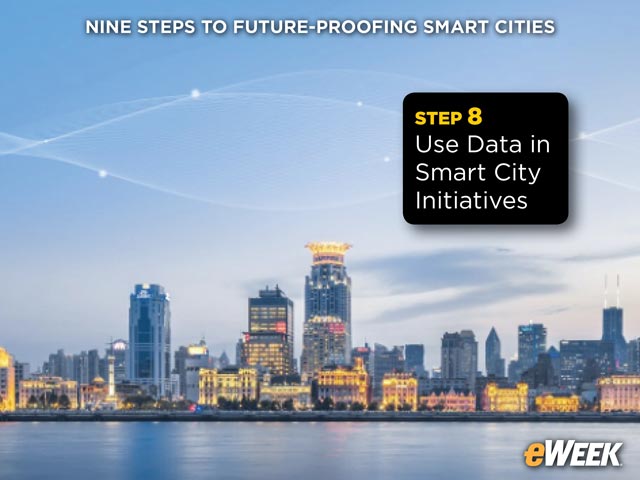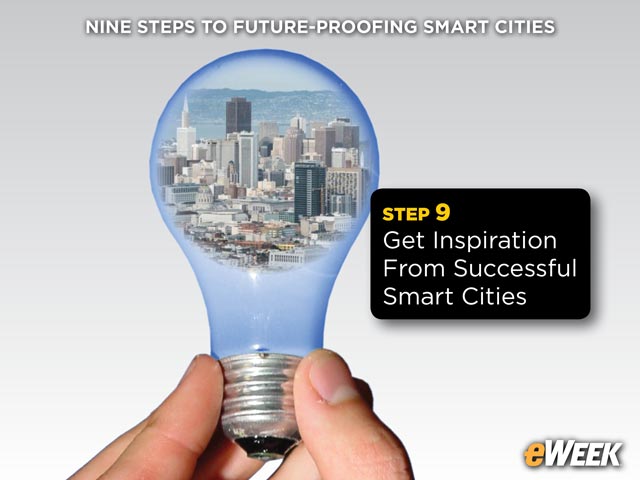eWEEK content and product recommendations are editorially independent. We may make money when you click on links to our partners. Learn More.
1Nine Steps to Future-Proofing Smart Cities
We’ve been reporting in eWEEK for several years on the business potential for internet of things (IoT) IT at work in so-called smart cities. The future continues to look bright for this sector. IDC recently reported that spending on smart-city technology is expected to hit $80 billion globally this year and $135 billion by 2021, making it critical for municipalities to prepare now to future-proof for tomorrow’s smart city needs. As cities move new applications and technologies into their production networks, the durability, resilience, security and performance of the network have yet to be tested. This eWEEK slide show, using industry information from international IT consultant Itron, discusses how cities can take the right steps now to manage future application needs and ensure their smart cities are ready for the future.
2Have an IoT Strategy
According to a recent report by the Wi-SUN Alliance, half of the organizations investing in IoT initiatives have already implemented a strategy, with an additional one-third having partially implemented strategies. Having a detailed implementation strategy is vital to creating a smart city. Leaders in cities and municipalities should develop an IoT strategy customized to their future smart city needs.
3Ensure Universal Coverage
IoT network operators in cities and municipalities must be able to reliably monitor and control devices, even in areas excluded or obstructed by carrier networks. A self-healing mesh design allows IoT devices to communicate with each other to establish multiple paths to create a network. If an access point is removed or obstructed, the network devices will automatically reroute and create a new communications path.
4Adopt a Solution Based on Open Industry Standards
No smart city network should be limited to a single vendor’s products or proprietary platform because technology evolves rapidly and new applications emerge frequently. A solution based on legitimate industry standards can provide the best opportunity for interoperability in the future, avoiding massive and costly system integration efforts.
5Demand Persistent Protection From Cyber-Threats
Cyber-attacks of all kinds, from malicious code to hackers, can cause immense damage to smart city networks and those who rely on them. IoT networks are vast, complicated networks with several points of entry. Not only can an attack be costly, but it could put public safety at risk. Cities rolling out an IoT network should demand the strictest security standards that enable military-grade security.
6Build a Solid Foundation
By focusing on current and future needs, network operators in smart cities can ensure the network architecture they choose will deliver the performance, durability, resilience and security required at initial deployment and as the network scales. This allows the network to remain responsive to its users as the number of the devices connected and applications on the network continuously expands. The chosen architecture will also have to support additional use cases that should be planned for.
7Use a Large and Diverse Ecosystem of Providers
Cities should utilize network technologies with a range of vendor support to enable an array of device options, offering a variety of features and functionality. Network platforms lacking support from multiple vendors deliver limited flexibility and features. Open standards allow a range of providers to develop solutions while interoperability testing ensures these solutions can collaborate. A range of options for advanced metering, lighting and control is essential to implementing comprehensive and integrated end-to-end solutions.
8Build a Long-Lasting Network
The best IoT devices are built to last 20 years, but IoT networks can live for much longer than that if they have the flexibility to adapt as new capabilities and technologies grow. Having a network with the ability to take on additional functionality lays a foundation for future enhancements. Cities should look for an end-to-end solution designed with the future in mind.
9Use Data in Smart City Initiatives
Connecting and correlating smart city data across multiple use cases can give cities and municipalities greater insights into how to make their smart city more efficient and resourceful. Connected data provides cities and municipalities with insights needed to help improve grid and city services. This gives cities an opportunity to better understand what their citizens need, improve how they manage city resources, deliver new services, strengthen community relationships and improve operational efficiencies. The city doesn’t have to do this alone, because there are several companies that are dedicated to data analytics and “deep learning.”
10Get Inspiration From Successful Smart Cities
City leaders can learn a thing or two from successful smart cities around the world, such as Copenhagen, San Francisco, Paris and Singapore. These cities have become some of the world’s most sustainable and smartest cities by transforming how they manage energy use, emergency response, traffic and more. Copenhagen, for example, is inching toward its ambitious goal of becoming carbon neutral by 2025 by using intelligent street lighting systems. These smart streetlights have resulted in 56 percent energy savings and 50 percent reduction in operations in maintenance costs.
